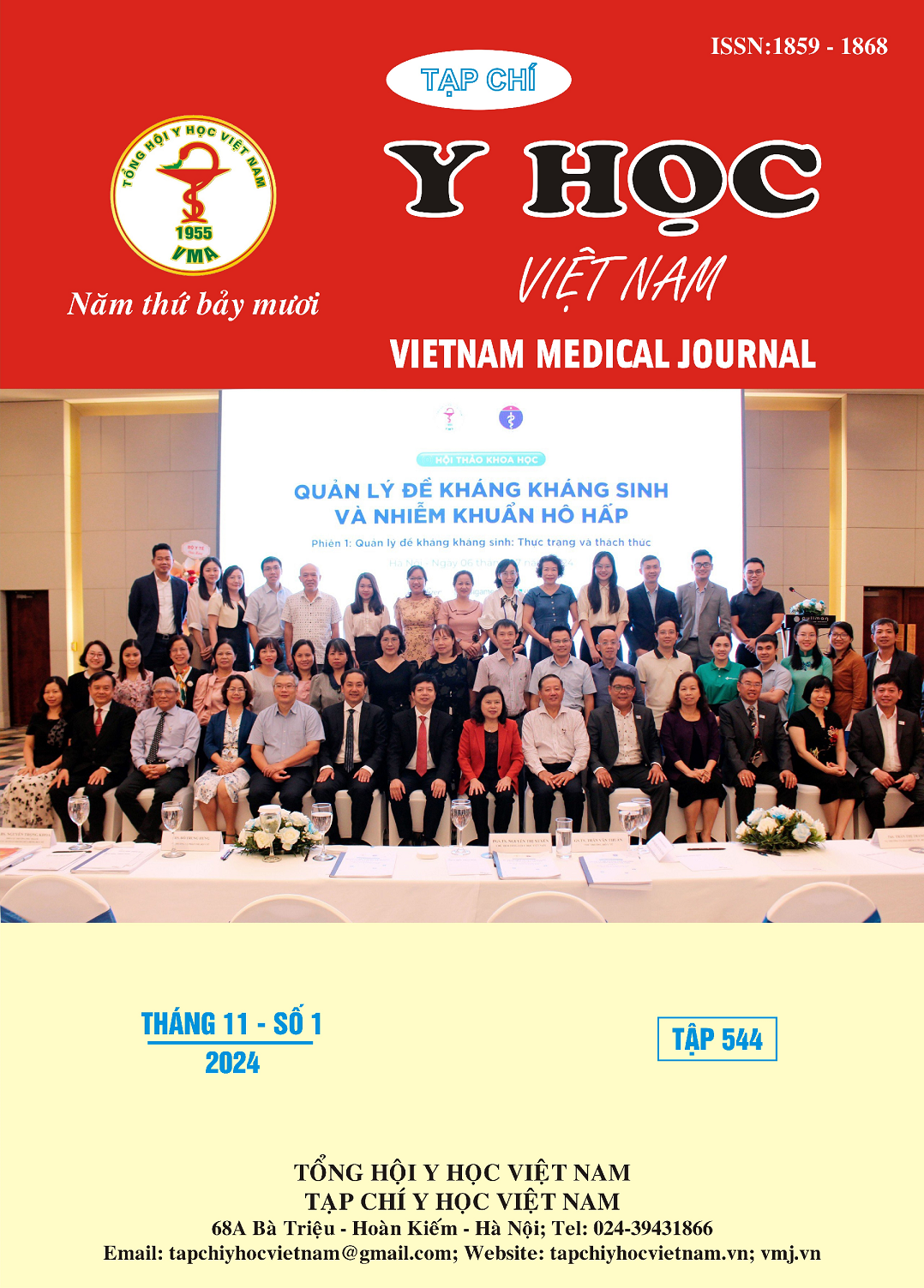A STUDY OF DOOR-TO-BALLOON TIME IN PRIMARY PERCUTANEOUS CORONARY INTERVENTION IN ST-SEGMENT ELEVATION MYOCARDIAL INFARCTION PATIENTS AT THANH HOA GENERAL HOSPITAL IN 2023
Main Article Content
Abstract
Percutaneous coronary intervention for acute myocardial infarction patients has significantly reduced mortality and morbidity rates; however, the door-to-balloon time often exceeds the recommended 120 minutes according to the 2023 ACC/AHA and ESC guidelines. Objectives: This study aims to investigate the door-to-balloon time achieved in primary coronary intervention for patients with ST-segment elevation acute myocardial infarction at Thanh Hoa General Hospital and evaluate the outcomes of implementing the VSTEMI program in Thanh Hoa Province. Subject and Methods: A retrospective cross-sectional study was conducted on patients with ST-segment elevation acute myocardial infarction underwent percutaneous coronary intervention from April 2023 to April 2024 at Thanh Hoa General Hospital. Results: The study included 201 patients, the average age was 67.16 ± 10.83 years; 70.65% were male. The majority of cases were inferior wall myocardial infarctions with 36.32%, the percentage of cases classified as Killip I was 83.58%. The average of door-to-balloon time was 329.48 ± 313.90 minutes, with only 30.85% of cases achieving a door-to-balloon time under 120 minutes. Conclusion: The door-to-balloon time for patients remains prolonged, with the majority experiencing delays. Process improvements are necessary to shorten the door-to-balloon time for patients with acute myocardial infarction undergoing coronary intervention.
Article Details
Keywords
ST- Segment Elevation Myocardial Infarction, Coronary Intervention, Door-to-Balloon Time, Thanh Hoa General Hospital.
References
2. Salari N, Morddarvanjoghi F, Abdolmaleki A, et al. (2023). The global prevalence of myocardial infarction: a systematic review and meta-analysis. BMC Cardiovasc Disord, 23(206).
3. Hoa LN, Quyen TB, Hoang VT, et al. (2022). Characteristics, in-hospital management, and complications of acute myocardial infarction in northern and Central Vietnam. International Journal of Cardiology, 364(2022), pp.133-138.
4. Byrne RA, Rossello X, Coughlan JJ, et al. (2023). 2023 ESC Guidelines for the management of acute coronary syndromes. Eur Heart J, 44(38), pp.3720-3826.
5. Al-Rumhi MA, Sabei SDA, Al-Noumani HS, et al. (2024). Influence of Organisational-Level Factors on Delayed Door-to-Balloon Time among Patients with ST-Elevation Myocardial Infarction. Sultan Qaboos Univ Med J, 24(2), pp.177-185.
6. Holzmann MJ, Andersson T, Doemland ML, Roux S (2023). Recurrent myocardial infarction and emergency department visits: a retrospective study on the Stockholm Area Chest Pain Cohort. Open Heart, 10(1), pp.1-9.
7. Lợi NH, Hùng PM, Chỉnh DĐ (2023). Thực trạng và một số yếu tố ảnh hưởng đến kết quả can thiệp động mạch vành qua da cấp cứu bệnh nhân nhồi máu cơ tim cấp có ST chênh lên tại Bệnh viện Hữu nghị Đa khoa Nghệ An. Tạp Chí Nghiên Cứu Học, 162(1), pp.237-246.
8. Thắng VV, Phong PT, Kiên NT (2019). Khảo sát thời gian cửa-bóng trong can thiệp mạch vành tiên phát ở bệnh nhân nhồi máu cơ tim cấp ST chênh lên tại Bệnh viện Đa khoa Trung ương Cần Thơ năm 2017-2018. Tạp chí Y tế Công cộng, 21, pp.1-6.


